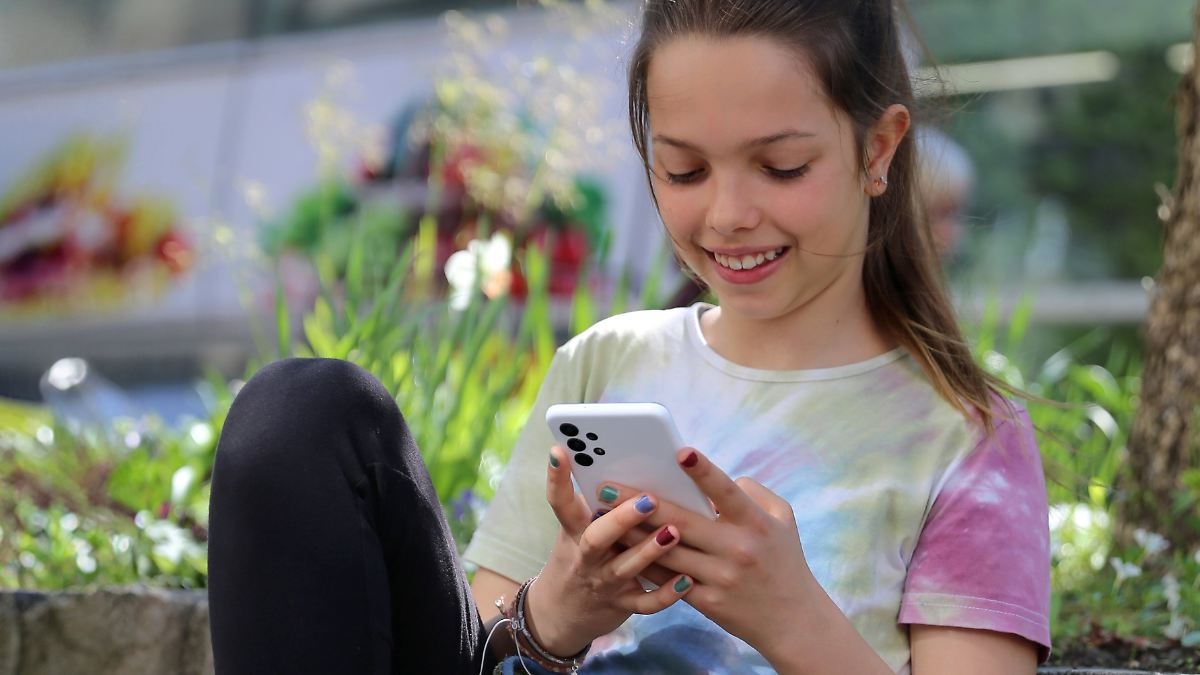Beauty obsession or support?: How social media affects girls

For girls, using social media can be a real burden.
(Photo: picture alliance / dpa-tmn)
Instagram, TikTok, or Snapchat: Adolescents use social media every day. But what impact do fake news, beauty tips, and hostility have on girls? And how does this affect equality? Experts have clear answers.
Instagram filters, TikTok trends, and influencers create enormous pressure to appear beautiful, slim, and perfect. At the same time, these platforms create spaces where girls can raise their voices, find like-minded people, and expose grievances. But what role does social media play in girls' lives? Is it more of a burdensome cage or a supportive mouthpiece? These are the answers for International Day of the Girl.
Is there equality online?
For the 2021 World Report on the Girl, the children's rights organization Plan International surveyed 26,000 girls and young women in 26 countries around the world about their experiences with fake news online. The result: Fake news, i.e., false information spread primarily on social networks, prevents girls from engaging in political and social activities.
"They are a key reason why they no longer want to share their opinions on social media. When girls withdraw from the digital space for fear of misinformation, hate, or hostility, this has a direct impact on equality," explains Pia Arndt of Plan International Germany.
There is no equality online, says Rüdiger Maas, psychologist, generational researcher, and director of the Institute for Generational Research. "The internet merely magnifies everything we have in the analog world." Hate messages spread faster online than in the real world. Around 70 percent of girls and women online have experienced violence, including, in the broadest sense, so-called body shaming.
Those who don’t dare become invisible?
Those who don't dare to express their opinions or engage politically are excluded from important social discourses, Arndt points out. "As a result, girls and young women not only lose visibility, but also influence – for example, on issues that directly affect them: education, equality, reproductive rights, climate protection, or digital violence."
Digital silence results in imbalance: While many boys and men speak out loudly—and are often less penalized for doing so—female perspectives are lacking. "When girls fall silent, democracy suffers. And equality becomes even more remote," Arndt explains.
Does social media increase pressure on girls or give them a voice?
According to Plan International, social media serves as a mirror and comparison platform, and young girls often measure themselves against unrealistic ideals. "This can lead to insecurities, low self-esteem, and the pressure to conform or appear perfect," says Arndt. Recent surveys have shown that intensive social media use is linked to an increase in eating disorders and can have various psychological effects.
In Maas's view, girls are more likely to seek out beauty ideals online. And they often see people who appear far more beautiful than themselves. Personality is key to dealing with this. "We don't know what self-esteem someone has when they go online," says Maas.
According to Plan International, communities can, in turn, boost girls' self-confidence, and social media can serve as a tool for networking and contributing. "What's important is a healthy, reflective approach to social media and the conscious decision about who you follow and what you consume," says Arndt.
How do online role models affect equality?
According to Arndt, social media often conveys stereotypical images of women—oriented toward traditional roles, beauty ideals, and societal expectations. Trends like #TradWives and #stayathomegirlfriends demonstrate how strongly traditional notions of femininity are returning to the spotlight. Women portray themselves as housewives, mothers, and caregivers, often in an idealized way. Platforms reinforce these images by making certain physical characteristics, status symbols, and staged lifestyles particularly visible.
According to Plan International, anti-feminist movements and toxic masculinity ideals that spread in online communities like "incels" are particularly problematic. "Incel" is a portmanteau of "involuntary" and "celibate." "They propagate misogynistic narratives, reject equal rights, and cement rigid gender roles. These ideologies promote a distorted image of men and ultimately endanger not only women, but also boys and men who suffer under this pressure," says Arndt.
Do social media reinforce beauty ideals more among girls than among boys?
According to Plan International, social media influences all genders. The pressure to perform and improve is real. This occurs primarily through the constant repetition and visibility of certain images and norms. Young users compare themselves to influencers, friends, and the ideals presented on social media. "Especially during adolescence, when many are looking for role models, guidance, and a sense of their own identity, such content can be particularly effective and, unfortunately, also problematic," says Arndt.
According to Maas, however, men don't compare themselves to models the way women do. They are also often less vulnerable.
What is International Day of the Girl Child?
At the initiative of Plan International, the United Nations first proclaimed October 11, 2012, as International Day of the Girl Child. Since then, the organization has used this day every year to raise awareness of the situation of girls worldwide. A special focus in 2025 will be on protecting girls from early and forced marriage.
Pink lighting has a long tradition: On the evening of October 11, Plan International draws attention to girls' rights by illuminating famous landmarks and buildings throughout Germany. Numerous cities and municipalities are participating in the lighting campaign again this year. In Hamburg alone, ten well-known landmarks will be illuminated in pink – including the Hamburg Michel church, Altona Town Hall, and the HSV Stadium.
Source: ntv.de, Tatjana Bojic, dpa
n-tv.de



